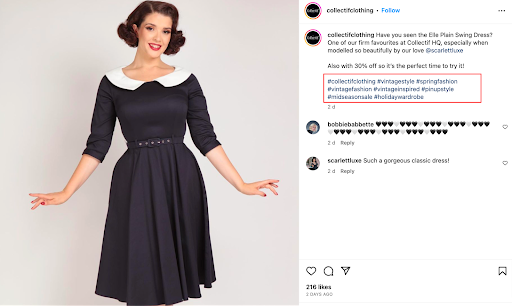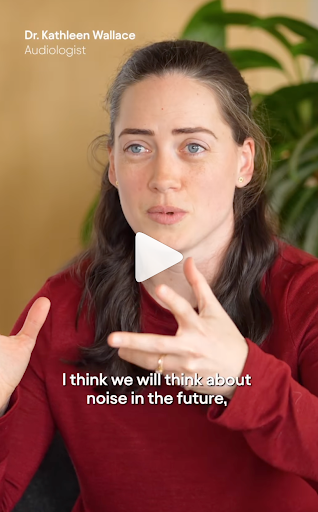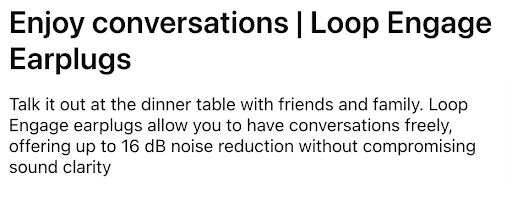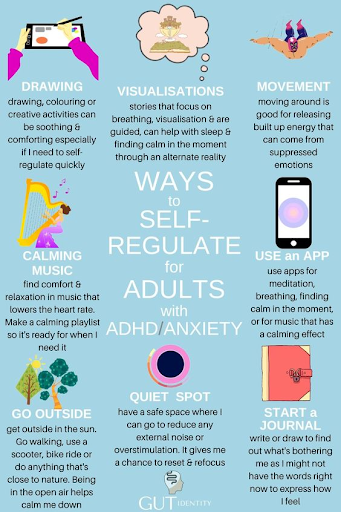Social media and SEO are normally seen as integral parts of any ecommerce business’s Digital Marketing strategy. They are powerful tools for drawing new eyes to a brand’s products as well as for retaining existing customers.
However, SEO and social media marketing are often managed in isolation from one another, with entirely different teams working on each kind of marketing.
This split typically makes sense for operational reasons, but there are many benefits to be gained from incorporating SEO elements within a social media strategy. By doing this, businesses can improve visibility on their chosen social media platforms, drive more traffic to their websites and, ultimately, boost sales.
In this post, we’re going to be exploring what Social SEO is, why e-commerce brands should consider it as part of their wider marketing strategy, and provide some expert tips on how to optimise social media profiles and the content published.
Content
Take Your Social Media SEO to the Next Level
What is Social SEO?
In comparison to traditional SEO which focuses on getting your website onto the front page of search engines, Social SEO is about optimising your social media profiles and your content to increase your visibility and exposure within specific platforms and even in some cases having your profiles and content appear in the SERPs.
This increase in visibility and exposure can lead to an increase in new eyes on your brand which can lead to more customers. However, it’s not straightforward – social media algorithms are very nuanced, and it can be challenging to get your content seen by the right people.
Why is Social SEO Important?
Optimising your profiles and content in line with Social SEO best practices is very important for ecommerce brands. Firstly, most ecommerce brands have an audience.
One of the main reasons why social SEO is so important is that your target audience is likely to be present on social media. Using social media platforms to connect with potential customers can increase brand awareness and encourage engagement with your brand.
A key advantage of social SEO is that it allows you to reach people who might not actively search for your business on Google or Bing
In addition to working supporting brands with SEO for over 7 years, I have also supported ecommerce brands, charities, and even creative artists with their social media strategies to drive traffic, engagement, and revenue.
With this in mind, we’re going to look at some of my top tips for optimising your social media networks with SEO.
Facebook SEO Tips
For e-commerce brands, Facebook provides a powerful opportunity to reach a large and diverse audience through targeted advertising and organic reach. With the ability to create a Facebook business page, brands can promote their products and services, engage with customers, and drive traffic to their e-commerce site.
Facebook Page Audit
When looking at your Facebook page for your e-commerce business, we suggest assessing it on the following criteria to make sure that it’s clear for both users and search engines what your page is about and who specifically your page is targeting.
This will result in the page being more likely to surface in both Facebook searches and Google searches.
- Does the name of your page instantly communicate what your page and/or business is about?
- Is your cover page sized properly for mobile? (sometimes the large cover photos with text can appear incorrectly cropped on mobile and tablet devices – make sure the key text remains visible)
- Does your page have an accurate description that outlines the business and the people it serves? (This is an ideal opportunity to include relevant keywords)
- Are you posting content regularly?
- Are your engagement levels high in relation to your niche and your competitors?
If your page manages to pass these quick checks, then you’re one step closer to getting your content to surface prominently in the feed and even with traditional search engines such as Google.
Inserting Keywords
Keywords play a strong part in optimising for SEO within Facebook. They allow the social network and search engines to understand the context of the content asset.
There are many places on Facebook to include target keywords. We suggest including keywords within the following areas. The key to this is to use them naturally within the copy.
- Page description
- Captions of photos and videos
- The video Tag section when uploading videos via Meta Business suite.
Tagging Posts With Locations
One feature that Facebook has that is useful for social SEO is the use of the location tag when uploading a post. Location tags can help improve the visibility of a post in Facebook searches that are location-based. This means that people looking for content related to a specific location will be more likely to find your post in their search results.
Alt Text
Using Alt Text on images within Facebook helps search engines understand the content of images and videos, which can improve the visibility of your posts in search results. In addition to this, Alt Text provides context for users who are visually impaired or have limited access to images, allowing them to understand the content of your post.
Maximising Engagement
Engagement is the key metric for success on Facebook for e-commerce brands – it indicates how effectively the brand is connecting with its audience and building a loyal customer base.
With Facebook, there are different types of posts you can share and each of those will generate different types of engagement.
The most common post types are:
- Status updates – just a comment or a question. No link, image, or video is attached.
- Photo upload – these can have a link you post along with the image, but the image is posted first, so the link does not autopopulate
- Video upload – These are typically at least 30 seconds long.
Each of these post types will result in a different engagement signal being triggered.
Engagement signals include:
- Clicking on the photo/video
- Watch time
- Click-through rate
- Likes/Reactions
- Saving a post
- Comments
- Shares
- Stopping The Scroll Stop
The key thing with your Facebook SEO is that you’ll need to alternate your post types and stack different types of content to benefit from different forms of engagement. When you stack your content, it teaches your audience how to interact with you, and when they know how to interact with you and your page, Facebook will send more people to you.
Instagram SEO Tips
Instagram has grown to become one of the most widely used social networks with over two billion active users. For e-commerce business owners, Instagram is an important platform to reach potential customers and promote their products.
Keywords in Captions
Similarly to Facebook, it’s important to include relevant keywords within the copy of your captions. This helps both search engines and Instagram understand the context and relevance of the content shared on the platform. Another advantage of this is that it can increase the visibility of content on traditional search engines like Google.
Keywords In Hashtags
One element of Instagram that can be optimised for social SEO is the use of hashtags. A hashtag is a word or phrase that starts with the hash sign (#). Hashtags are used to categorise content and allow users to find other posts that feature the same hashtag.
By making relevant keywords into hashtags, e-commerce brands can increase the visibility and reach of their Instagram posts to a wider audience who are interested in the same topics or themes that the content is displaying.
Subtitles in Reels
Instagram launched its reels feature in 2020 as a way to compete with TikTok (we’ll focus specifically on TikTok later in this article). A reel is a short-form vertical video that allows users to create and share content with various tools and effects. One of the best effects that is used in Instagram Reels is the use of text as a subtitle.
It’s best practice to use Instagram’s native caption and text feature when adding subtitles to a reel as opposed to adding in a third-party app or software. This is so Instagram can fully understand the context and recognise it within its system.
Adding subtitles to the reel can improve the accessibility and inclusivity of your content as some of your viewers may be deaf, hard of hearing or prefer to watch videos without sound (such as those commuting on public transport).
Subtitles can also dramatically increase the watch time and engagement of Instagram Reels as they attract attention within the feed.
TikTok SEO Tips
TikTok is a social media platform that allows users to create and share short-form videos with a global audience. It originated from the Chinese app Douyin, which was launched in September 2016 by the Chinese tech company ByteDance.
In September 2017, ByteDance launched the app TikTok for markets outside of China. Since then, TikTok has become one of the most popular social media platforms worldwide, especially for e-commerce brands.
TikTok has many similar features to Instagram, especially after Instagram launched Reels as a way to compete with the platform. Tips that we have already discussed as part of the section on Instagram, such as keywords in captions and hashtags and using subtitles, are highly advantageous for ensuring the reach of content on TikTok too.
Create Quality Content
TikTok’s ‘For You’ page is very complex, but we know that the algorithm considers previous video interactions, accounts followed, hashtags followed and your location. This enables the “For You” page to serve users videos that TikTok thinks your audience will enjoy.
High-quality content that is entertaining, informative and relevant will be rewarded in the platform. By creating content of this nature, e-commerce businesses can increase their reach, exposure, and engagement and build a loyal following.
Use Trending Sounds and Audio
One reason why TikTok is incredibly popular is due to the regular emergence of trends. E-commerce brands should consider using trending sounds and audio on TikTok. By using tending sounds, brands can improve the visibility of their content and increase the chances of being discovered by new audiences, this is due to your content being likely to appear in the “For You” section of TikTok, which is where users go to discover new content.
It can also help the business appear more approachable and relatable, leading to increased engagement and potential sales.
Post Consistently
Posting consistently is of great importance on any social media platform, but especially so for TikTok. It helps brands maintain a strong presence and build a loyal following on the platform. Consistent posting also increases the chances of their content reaching a wider audience and potentially going viral.
For example, Lizzie Herne who worked on the Carmex Lip Balm TikTok strategy recently outlined that posting consistently with 1 video per week was a key part of the strategy she executed to drive followers to the Carmex TikTok account.
Pinterest SEO Tips
Today, Pinterest has over 450 million active users and is one of the top platforms for eCommerce marketing. Pinterest allows businesses to visually showcase their products or services with Pins and Boards and allows them to reach a highly engaged audience who are using the platform for purchase inspiration.
Keywords in Pin Titles
Pin titles need to be descriptive in order to increase visibility in the Pinterest feed and encourage users to click through your site. Naturally, titles are one place where you can insert relevant keywords.
Pin Descriptions
With a Pin Description, use this to preview your content to users by highlighting its benefits, key takeaways, or a unique feature. Keep the description short- around 100 characters – to provide enough information as well as to incorporate relevant keywords.
Pin Design
The design of a pin is incredibly important as you will want pins to attract new users and encourage them to click through to the site. To achieve this, consider using high-contrast colours to enable pins to stand out in the results.
Infographics also perform well on this platform so consider turning some of the key points from an existing blog post into a useful infographic.
It is also recommended by Pinterest that you make your pins 1,000px by 1,500x or a ratio of 2:3 as Pinterest prefers to display longer images on both mobile and desktop.
Finally, it’s important to include text as an overlay on your images to ensure it stands out within the Pinterest feed.
Take Your Social Media SEO to the Next Level
Social media SEO can be a real game-changer for e-commerce brands looking to improve their online visibility, drive traffic to their websites, and increase sales. By following the tips outlined in this article, brands can unleash the power of social media SEO and achieve their business goals. For further information on how Re:Signal supports ambitious e-commerce brands with SEO, contact us today.










